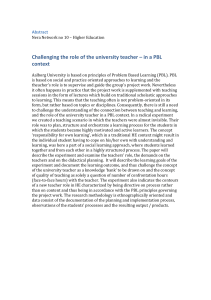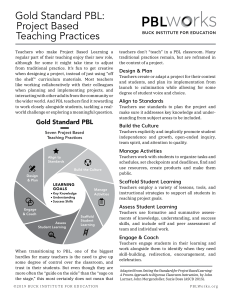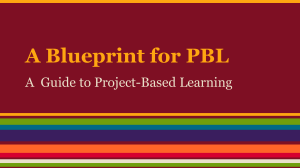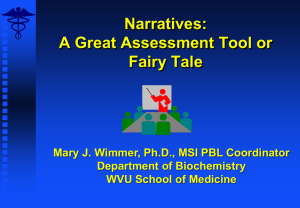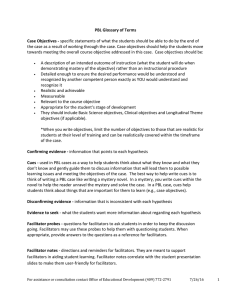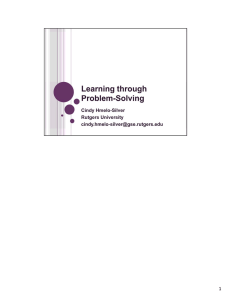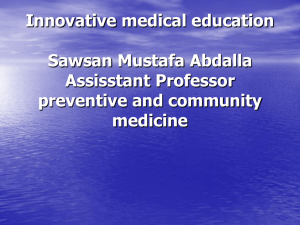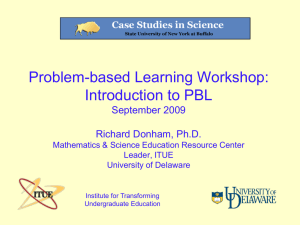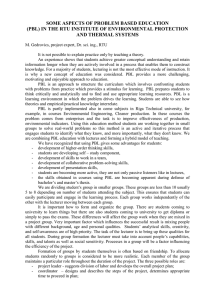Important Characteristics of Quality Performance of University Graduates
advertisement
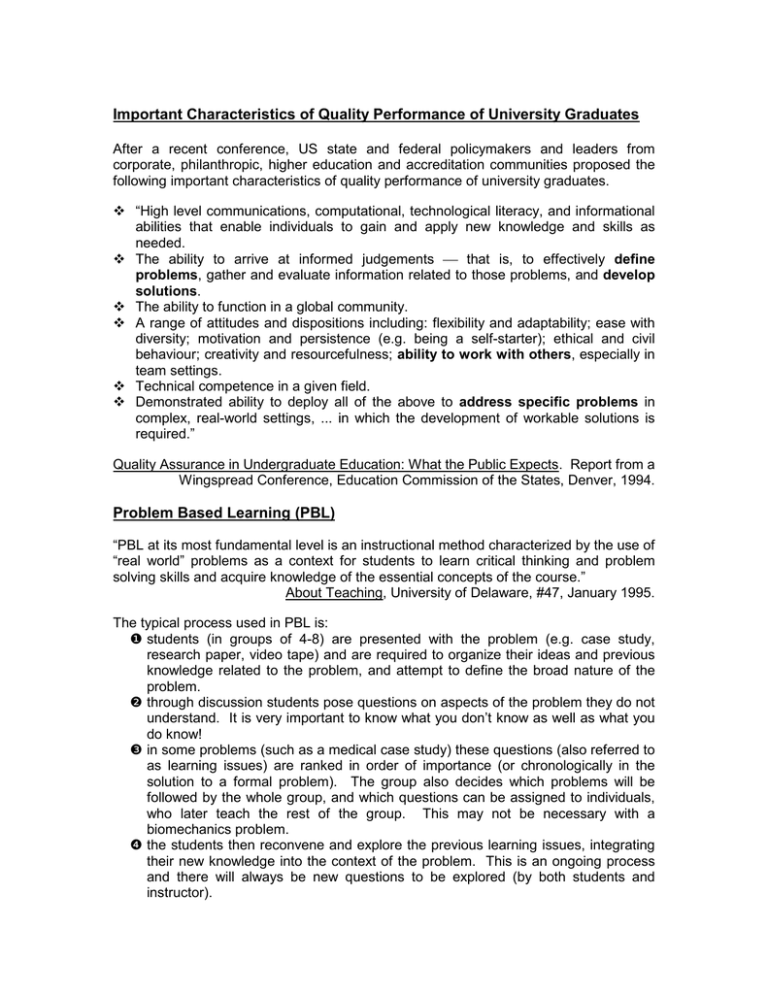
Important Characteristics of Quality Performance of University Graduates After a recent conference, US state and federal policymakers and leaders from corporate, philanthropic, higher education and accreditation communities proposed the following important characteristics of quality performance of university graduates. ! “High level communications, computational, technological literacy, and informational abilities that enable individuals to gain and apply new knowledge and skills as needed. ! The ability to arrive at informed judgements that is, to effectively define problems, gather and evaluate information related to those problems, and develop solutions. ! The ability to function in a global community. ! A range of attitudes and dispositions including: flexibility and adaptability; ease with diversity; motivation and persistence (e.g. being a self-starter); ethical and civil behaviour; creativity and resourcefulness; ability to work with others, especially in team settings. ! Technical competence in a given field. ! Demonstrated ability to deploy all of the above to address specific problems in complex, real-world settings, ... in which the development of workable solutions is required.” Quality Assurance in Undergraduate Education: What the Public Expects. Report from a Wingspread Conference, Education Commission of the States, Denver, 1994. Problem Based Learning (PBL) “PBL at its most fundamental level is an instructional method characterized by the use of “real world” problems as a context for students to learn critical thinking and problem solving skills and acquire knowledge of the essential concepts of the course.” About Teaching, University of Delaware, #47, January 1995. The typical process used in PBL is: ❶ students (in groups of 4-8) are presented with the problem (e.g. case study, research paper, video tape) and are required to organize their ideas and previous knowledge related to the problem, and attempt to define the broad nature of the problem. ❷ through discussion students pose questions on aspects of the problem they do not understand. It is very important to know what you don’t know as well as what you do know! ❸ in some problems (such as a medical case study) these questions (also referred to as learning issues) are ranked in order of importance (or chronologically in the solution to a formal problem). The group also decides which problems will be followed by the whole group, and which questions can be assigned to individuals, who later teach the rest of the group. This may not be necessary with a biomechanics problem. ❹ the students then reconvene and explore the previous learning issues, integrating their new knowledge into the context of the problem. This is an ongoing process and there will always be new questions to be explored (by both students and instructor).

